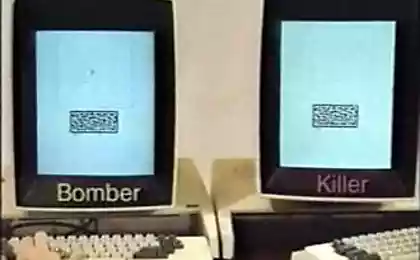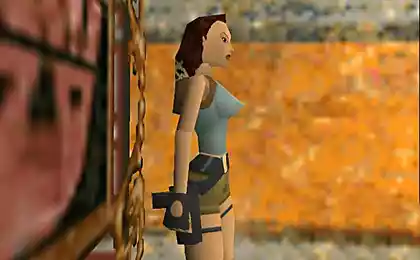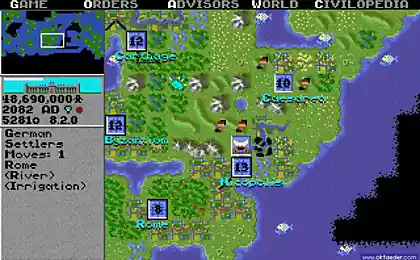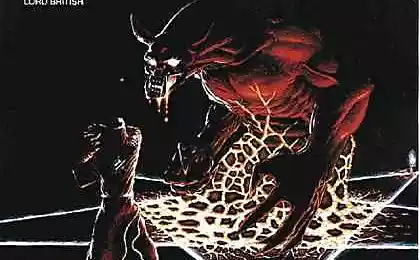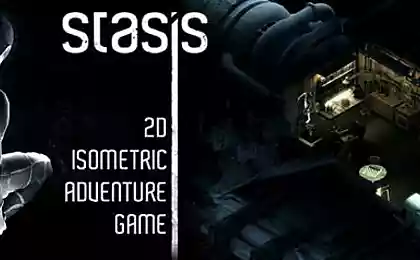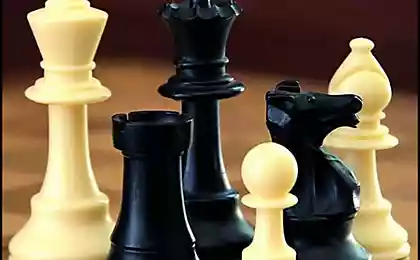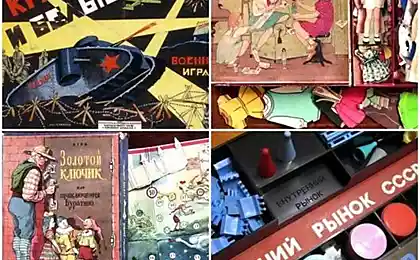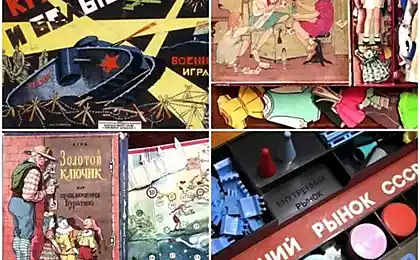815
Computer games. Start
It is hard to imagine how many computer games have been written with the appearance of the first electronic computers. However, the first computer game already turned 67 years old. How it all began?
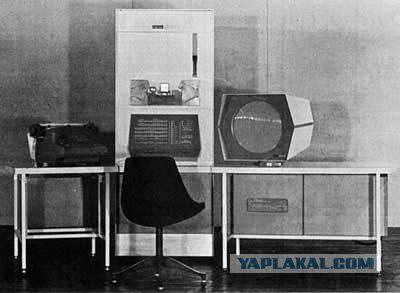
Back in 1942, Thomas Goldsmith Jr. and Ray Eastleigh mennom in Cambridge was established missile simulator. It works "engineering marvel" - on what you thought - on the oscilloscope. Unfortunately, the picture you have not find anywhere else.
Later, there were tic-tac, «OXO» (1952) and Tennis for Two (1958).
Yes, the creators could not imagine that written in his spare from research and development program for entertainment will grow into a huge business. And even become "engine" in the development of more powerful computers.

On this you can make money?
The first commercial project was the game SpaceWar. No, she wrote, of course, in his spare time, programmers at MIT in 1962. The project is led by Steve Russell and Martin Graetz.
And it has become a commercial in 1971. However, its creators game, as it happens, did not bring any income.
Blame first the pirates. The fact that a few months before the release of the commercial version SpaceWar, indoor Stanford Student Union was already a slot machine with a modification of the game - Galaxy Game. It is just was a success and allowed the return of the automaton creator Bill Pitts, it invested 60 thousand. Dollars.
The computer only for games
Ralph Baer became the king of video games. In 1966, he initiated the establishment of the computer on which you could play the game at home. He developed the "light gun" in 1967.
January 15, 1968 Bayer was granted a patent in the first video game. In October, the "miracle device" was ready. It could play ping-pong, volleyball and football.
The contract is for the production of these "attachments" to the TV (correct to speak of "console") was signed in 1969.
Since March 1972 Magnavox Odyssey console was sold in stores at a price 99 to $ 95. In the period from 1972 to 1975 have been sold around 350 thousand pieces. In Japan, it is marketed by Nintendo, is not available at the time of his own design
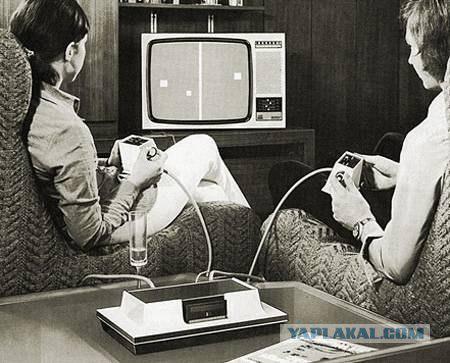
Crisis spares no one
During 1983 - 1984 years of market downturn videokonsoley, games for them and the bankruptcy of the leading software companies consoles and home computers marked the end of the second-generation video attachments. Thousands of potential hits game scheduled for implementation in the new 1983, were suspended, and have issued cartridges were simply thrown away.
The crisis began in 1983:
- In 1981-85 aggressive pricing and promotional policies of manufacturers in Europe, it has caused a great demand for home computers (Commodore 64, Apple II).
- The market was oversaturated with a variety of game consoles. Until 1983, the US buyer can choose from more than a dozen incompatible consoles and accessories to them (Atari 2600, Atari 5200, Bally Astrocade, Colecovision, Coleco Gemini, Emerson Arcadia 2001, Fairchild Channel F System II, Magnavox Odyssey, Mattel Intellivision and their "clones"). In addition, for each console had its own set of games.
- Glut of poor quality games and the lack of "mainstream" inherent in the previous generation of consoles.
The collapse in prices on unsold cartridges - 34, $ 95 in 1982 to 4, 95, in June 1983, has aggravated the situation, as manufacturers began to focus on the low-cost low-quality projects in order to stay afloat.
Nintendo has reserved for itself the lion's share of the market, dictating the rights of other companies monopolist his will. All licensed cartridges are manufactured strictly on Nintendo and equipment have been fully paid for at the expense of the developer of the game. In case of failure, the cartridges did not return Nintendo, so the game industry at that time was quite a risky business. Later, with the emergence of competitors (Sega, Sony, Microsoft) and the struggle for the development of these requirements have been greatly weakened.
A special role in the history of computer games played by the computer created on the basis of the processor Z80.
In 1980, the firm Sinclair Research Ltd. - The brainchild of Clive Sinclair Marlza - released a computer ZX-80 with a price of 99, 95 pounds. It was simply not conceivable a small price for the computer. Use instead of the home TV screen as well as external memory as a home tape recorder - it was a very good decision. But even this was not enough to Spectrum (more powerful, and later ZX) sold in the Soviet Union.
Computers in Union began perestroika not be bought and made by skilled craftsmen. Our compatriots, as time has shown, for the assembly of "Spectrum" is not needed, even a complete set of parts - well enough alone concept and, of course, the most important components - the processor Z80. The rest of "our" produced either alone (diluted board improvised, master keyboard) or made on the basis of the domestic element base.
In parallel with the development of ZX Spectrum began to emerge and the first game clubs - home "brothers" of the Soviet video clubs. Typical computer club at the time - a basement room with five or six "Spectrum". Of course, from an assortment of the most popular games then we got arcade of any networked entertainment and similar joys and then out of the question. Nevertheless, prior to the 90 such clubs collected sold out - in order to play, you had to stand all. It is worth noting that there were attempts to create a gaming club on the basis of other platforms - often Commodore or Atari. However, none of the competitors failed to penetrate the USSR.

As the console came to us
In 1993, the NES (Nintendo Entertainment System) appeared in Russia and the CIS countries in the form of illegal hardware clone called Dendy, and manufacturing in China. Her firm engaged in spread Steepler. Production of consoles was officially discontinued in 1995. However, the NES game library available to users of most modern computer systems using emulators.
Needless to say how many hits were released for this console.
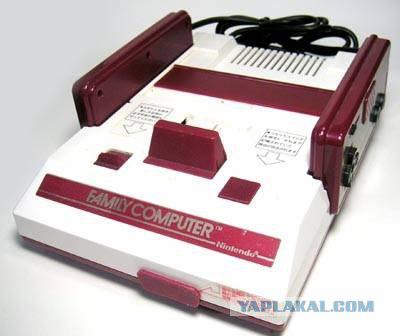
"Sadly," the famous Tetris
Few people now do not know what the author of the world famous Tetris game is Alexey Leonidovich Pajitnov, then still an ordinary Soviet engineer. He just moved to the computer puzzle American mathematician Solomon Golomb, which is a set of several well-known figures, we are now all shapes and pretty much the idea of the game added: Reduce the number of cells for each figure from 5 to 4; invented glass figurines which fell in real time. The original version of the game was written on a computer "Elektronika-60", in the language Pascal.
Later, Tetris has been transferred to a PC and quickly broke through the capital. The game was copied each other on a floppy disk, they passed on to their friends. So she became popular in the USSR. Then she went abroad and began skirmishes with the authorship of this simple, but very interesting game. Tetris immediately gained fame and began to sell quite good circulation, gradually conquering more and more and more popular. In 1989, "Tetris" was awarded several important awards of the American Association of Software Developers. In particular, as the best consumer software, the best of the original design and the best entertainment program.
Generally, about Tetris goes a lot of legends and incredible stories.

Many different things have happened in this wonderful world of "mouse and joystick." Generation consoles were replaced one after the other. The users of personal computers offered more powerful components, only in order to play. Games ported from the PC to the console and back. Some developments have been legendary, and remained in our hearts (and maybe in our media), while others are forgotten forever. But the games are designed and developed so far, no matter what.
The article used materials:
ru.wikipedia.org/
www.nytimes.com/2002/02/28/technology/28SPAC.html
www.igromania.ru/Articles/5213/Smer...mu_ne_uchit.htm
www.igromania.ru/Articles/4177/Isto...pokoril_mir.htm
www.ixbt.com/games/man-pajitnov.shtml
All
Source:

Back in 1942, Thomas Goldsmith Jr. and Ray Eastleigh mennom in Cambridge was established missile simulator. It works "engineering marvel" - on what you thought - on the oscilloscope. Unfortunately, the picture you have not find anywhere else.
Later, there were tic-tac, «OXO» (1952) and Tennis for Two (1958).
Yes, the creators could not imagine that written in his spare from research and development program for entertainment will grow into a huge business. And even become "engine" in the development of more powerful computers.

On this you can make money?
The first commercial project was the game SpaceWar. No, she wrote, of course, in his spare time, programmers at MIT in 1962. The project is led by Steve Russell and Martin Graetz.
And it has become a commercial in 1971. However, its creators game, as it happens, did not bring any income.
Blame first the pirates. The fact that a few months before the release of the commercial version SpaceWar, indoor Stanford Student Union was already a slot machine with a modification of the game - Galaxy Game. It is just was a success and allowed the return of the automaton creator Bill Pitts, it invested 60 thousand. Dollars.
The computer only for games
Ralph Baer became the king of video games. In 1966, he initiated the establishment of the computer on which you could play the game at home. He developed the "light gun" in 1967.
January 15, 1968 Bayer was granted a patent in the first video game. In October, the "miracle device" was ready. It could play ping-pong, volleyball and football.
The contract is for the production of these "attachments" to the TV (correct to speak of "console") was signed in 1969.
Since March 1972 Magnavox Odyssey console was sold in stores at a price 99 to $ 95. In the period from 1972 to 1975 have been sold around 350 thousand pieces. In Japan, it is marketed by Nintendo, is not available at the time of his own design

Crisis spares no one
During 1983 - 1984 years of market downturn videokonsoley, games for them and the bankruptcy of the leading software companies consoles and home computers marked the end of the second-generation video attachments. Thousands of potential hits game scheduled for implementation in the new 1983, were suspended, and have issued cartridges were simply thrown away.
The crisis began in 1983:
- In 1981-85 aggressive pricing and promotional policies of manufacturers in Europe, it has caused a great demand for home computers (Commodore 64, Apple II).
- The market was oversaturated with a variety of game consoles. Until 1983, the US buyer can choose from more than a dozen incompatible consoles and accessories to them (Atari 2600, Atari 5200, Bally Astrocade, Colecovision, Coleco Gemini, Emerson Arcadia 2001, Fairchild Channel F System II, Magnavox Odyssey, Mattel Intellivision and their "clones"). In addition, for each console had its own set of games.
- Glut of poor quality games and the lack of "mainstream" inherent in the previous generation of consoles.
The collapse in prices on unsold cartridges - 34, $ 95 in 1982 to 4, 95, in June 1983, has aggravated the situation, as manufacturers began to focus on the low-cost low-quality projects in order to stay afloat.
Nintendo has reserved for itself the lion's share of the market, dictating the rights of other companies monopolist his will. All licensed cartridges are manufactured strictly on Nintendo and equipment have been fully paid for at the expense of the developer of the game. In case of failure, the cartridges did not return Nintendo, so the game industry at that time was quite a risky business. Later, with the emergence of competitors (Sega, Sony, Microsoft) and the struggle for the development of these requirements have been greatly weakened.
A special role in the history of computer games played by the computer created on the basis of the processor Z80.
In 1980, the firm Sinclair Research Ltd. - The brainchild of Clive Sinclair Marlza - released a computer ZX-80 with a price of 99, 95 pounds. It was simply not conceivable a small price for the computer. Use instead of the home TV screen as well as external memory as a home tape recorder - it was a very good decision. But even this was not enough to Spectrum (more powerful, and later ZX) sold in the Soviet Union.
Computers in Union began perestroika not be bought and made by skilled craftsmen. Our compatriots, as time has shown, for the assembly of "Spectrum" is not needed, even a complete set of parts - well enough alone concept and, of course, the most important components - the processor Z80. The rest of "our" produced either alone (diluted board improvised, master keyboard) or made on the basis of the domestic element base.
In parallel with the development of ZX Spectrum began to emerge and the first game clubs - home "brothers" of the Soviet video clubs. Typical computer club at the time - a basement room with five or six "Spectrum". Of course, from an assortment of the most popular games then we got arcade of any networked entertainment and similar joys and then out of the question. Nevertheless, prior to the 90 such clubs collected sold out - in order to play, you had to stand all. It is worth noting that there were attempts to create a gaming club on the basis of other platforms - often Commodore or Atari. However, none of the competitors failed to penetrate the USSR.

As the console came to us
In 1993, the NES (Nintendo Entertainment System) appeared in Russia and the CIS countries in the form of illegal hardware clone called Dendy, and manufacturing in China. Her firm engaged in spread Steepler. Production of consoles was officially discontinued in 1995. However, the NES game library available to users of most modern computer systems using emulators.
Needless to say how many hits were released for this console.

"Sadly," the famous Tetris
Few people now do not know what the author of the world famous Tetris game is Alexey Leonidovich Pajitnov, then still an ordinary Soviet engineer. He just moved to the computer puzzle American mathematician Solomon Golomb, which is a set of several well-known figures, we are now all shapes and pretty much the idea of the game added: Reduce the number of cells for each figure from 5 to 4; invented glass figurines which fell in real time. The original version of the game was written on a computer "Elektronika-60", in the language Pascal.
Later, Tetris has been transferred to a PC and quickly broke through the capital. The game was copied each other on a floppy disk, they passed on to their friends. So she became popular in the USSR. Then she went abroad and began skirmishes with the authorship of this simple, but very interesting game. Tetris immediately gained fame and began to sell quite good circulation, gradually conquering more and more and more popular. In 1989, "Tetris" was awarded several important awards of the American Association of Software Developers. In particular, as the best consumer software, the best of the original design and the best entertainment program.
Generally, about Tetris goes a lot of legends and incredible stories.

Many different things have happened in this wonderful world of "mouse and joystick." Generation consoles were replaced one after the other. The users of personal computers offered more powerful components, only in order to play. Games ported from the PC to the console and back. Some developments have been legendary, and remained in our hearts (and maybe in our media), while others are forgotten forever. But the games are designed and developed so far, no matter what.
The article used materials:
ru.wikipedia.org/
www.nytimes.com/2002/02/28/technology/28SPAC.html
www.igromania.ru/Articles/5213/Smer...mu_ne_uchit.htm
www.igromania.ru/Articles/4177/Isto...pokoril_mir.htm
www.ixbt.com/games/man-pajitnov.shtml
All
Source:


